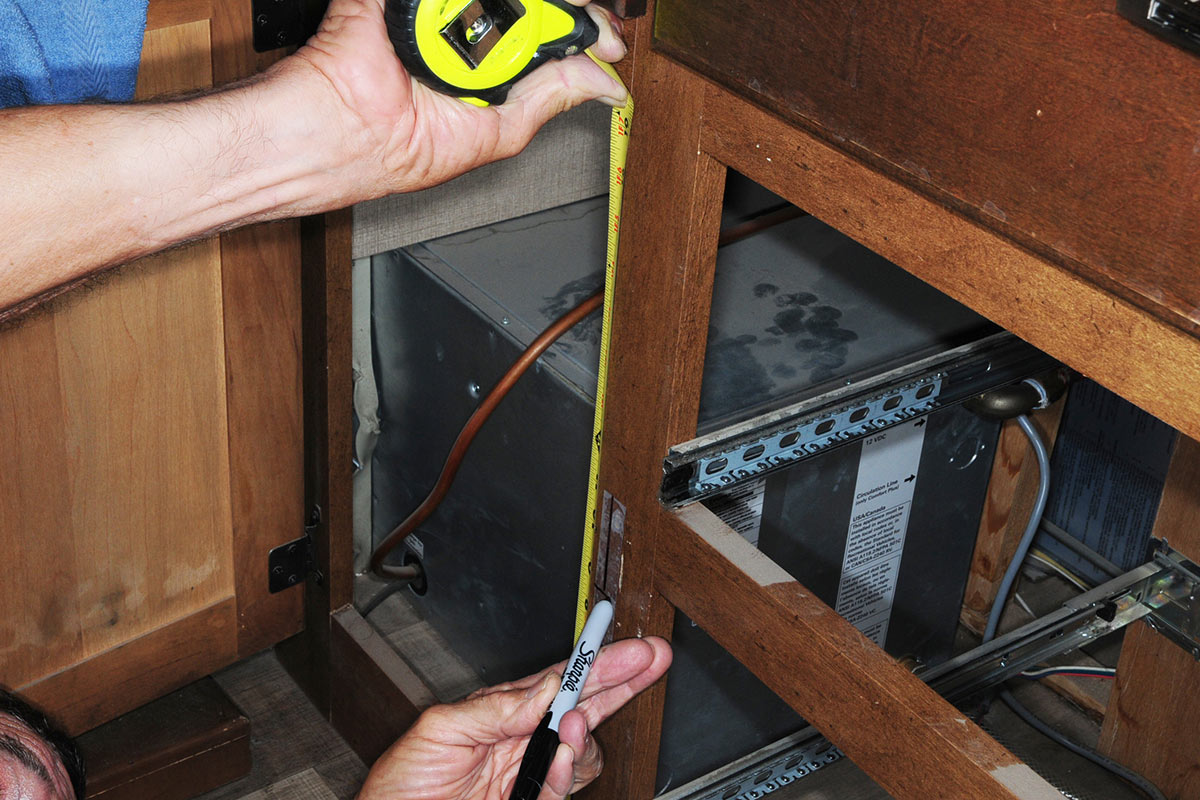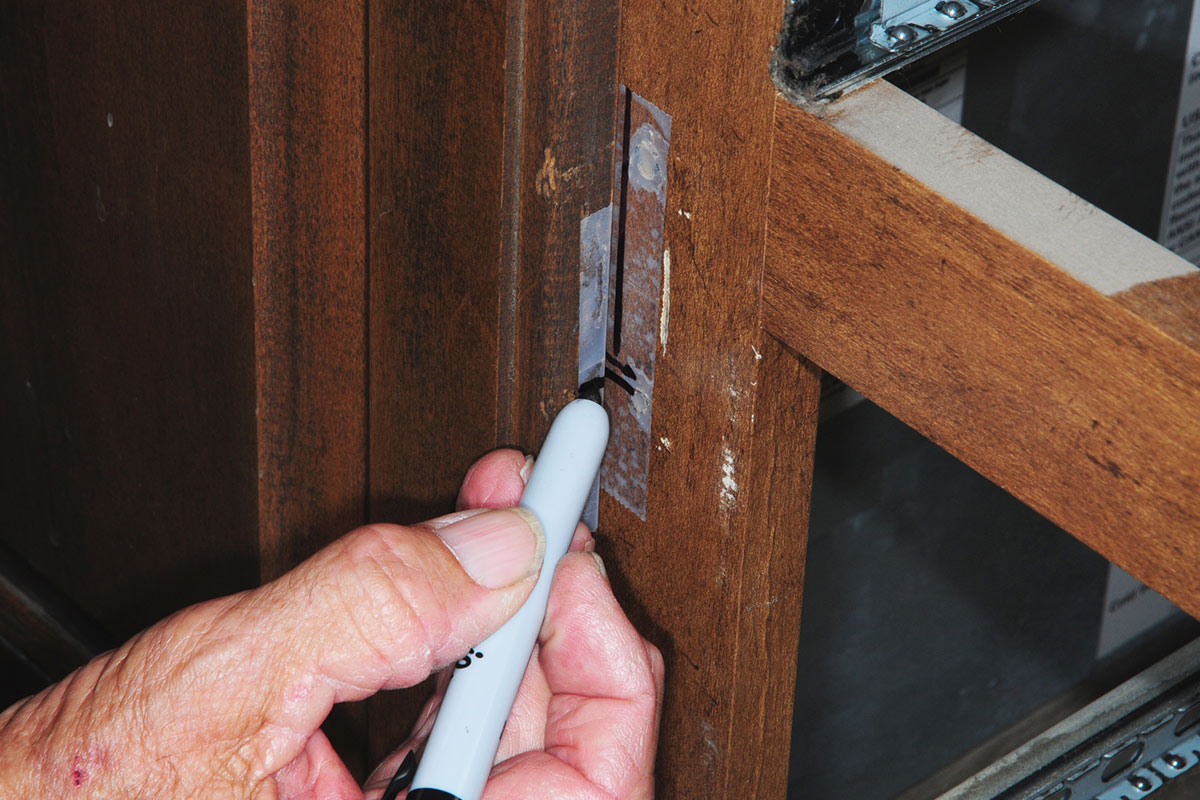Getting Closure

Fortunately, these latches are easy to replace.
In my fifth wheel, one of the cabinet doors leads to access to the water heater, so the manufacturer sealed it shut with another hinge. Not exactly rocket science, but it kept the cabinet door secure — until, that is, the screws let loose from the wood. Although nothing was stored in the cabinet, allowing the door to swing freely presented a big problem: When it opened on the road, it had the potential to jam against the slide-out molding, which would have caused quite a bit of damage if not noticed before operating the slide. The solution? Replace it with the same type of latching mechanism holding the other drawers and cabinet doors in place.
Installing the latch takes some measuring and maneuvering to line up properly because the mounting surfaces are not accessible when the door/drawer is closed. Placing tape (masking, duct or even transparent with a writable surface) in a strategic location and marking the center with a Sharpie assured accuracy when driving the screws into the two pieces that make up the latch. The old holes for the hinge were later filled with a putty stick matching the cabinet color.










Now the cabinet door closes tightly — and I have immediate access to the area behind the water heater without having to remove a hinge and strip the holes for the screws. And, I have inventory on hand to fix other cabinet doors and drawers when necessary.
Already a Subscriber? Click here for Access to the Full Issues.

